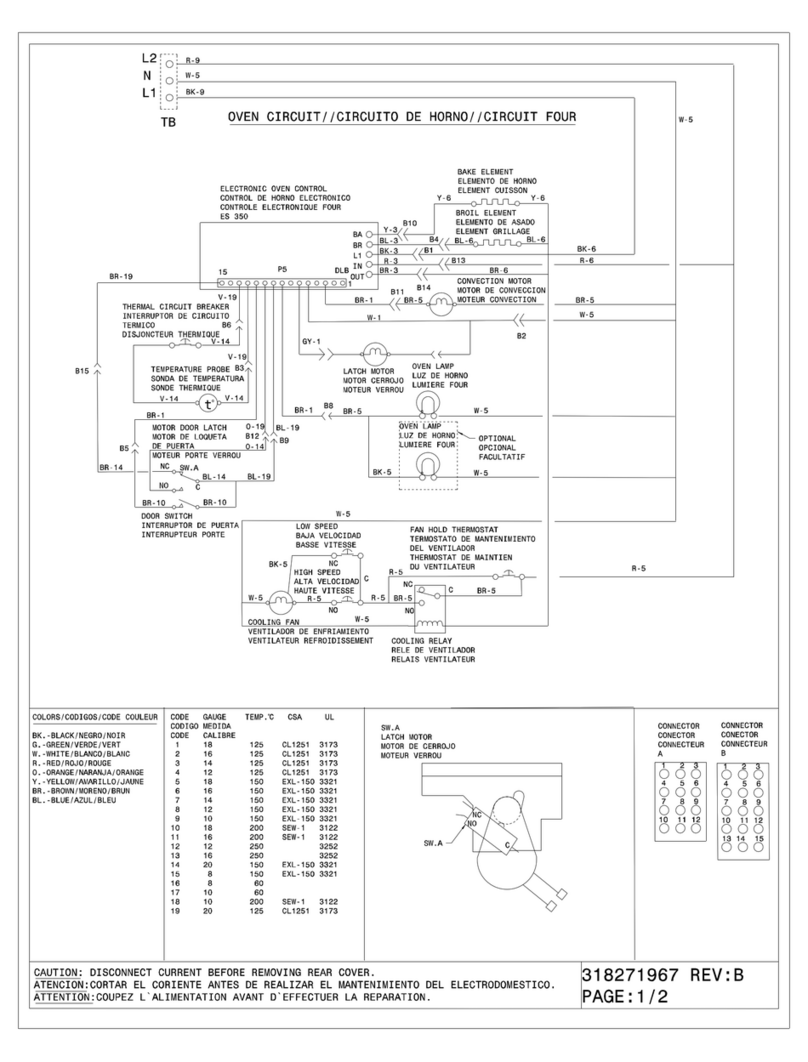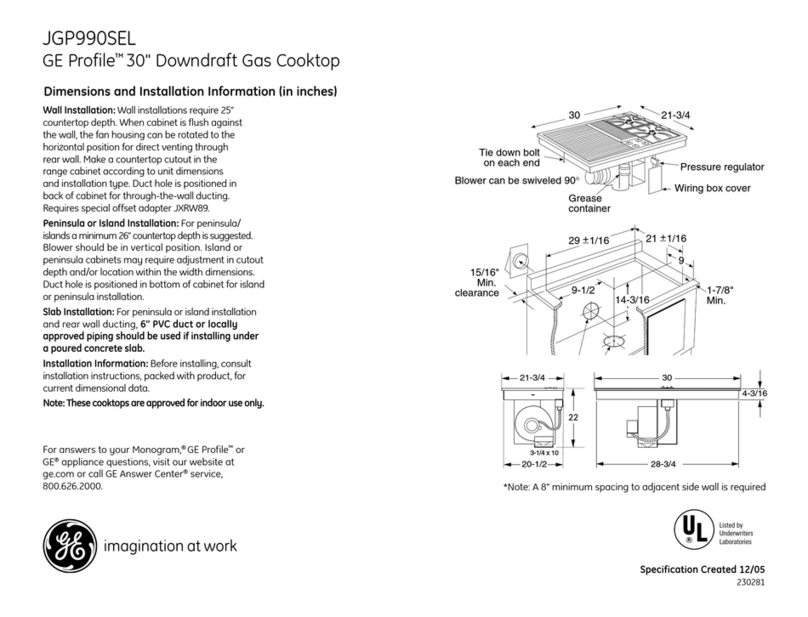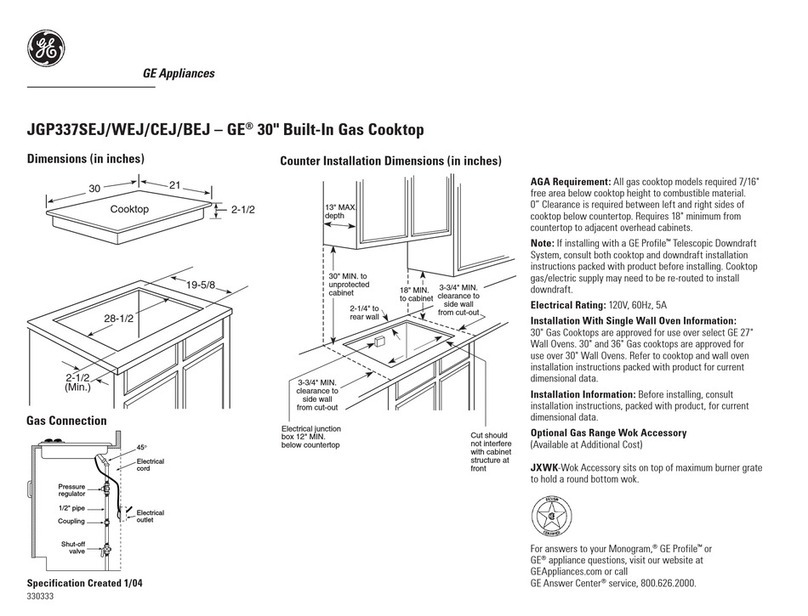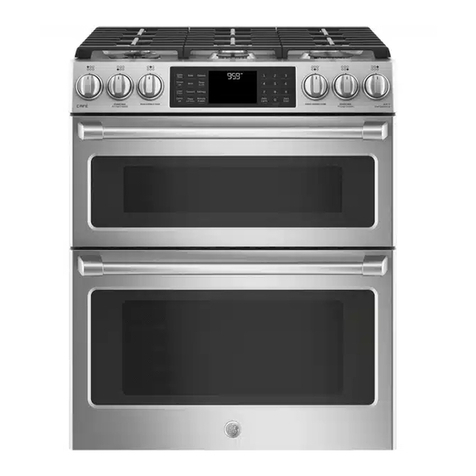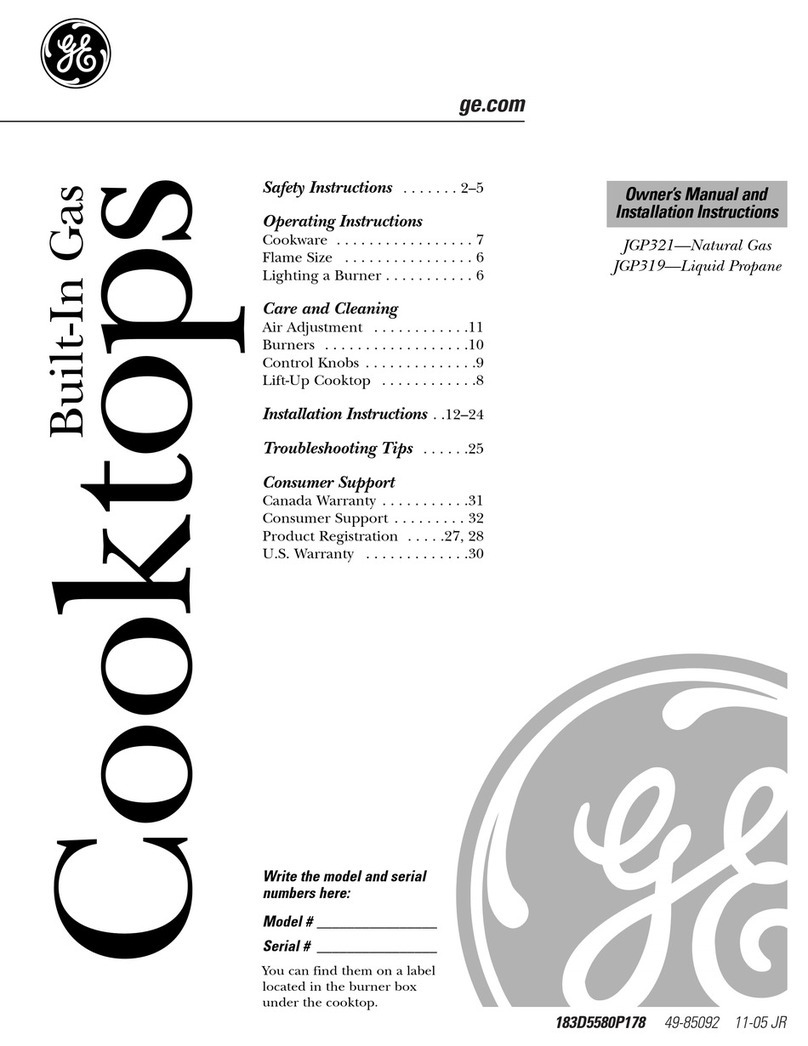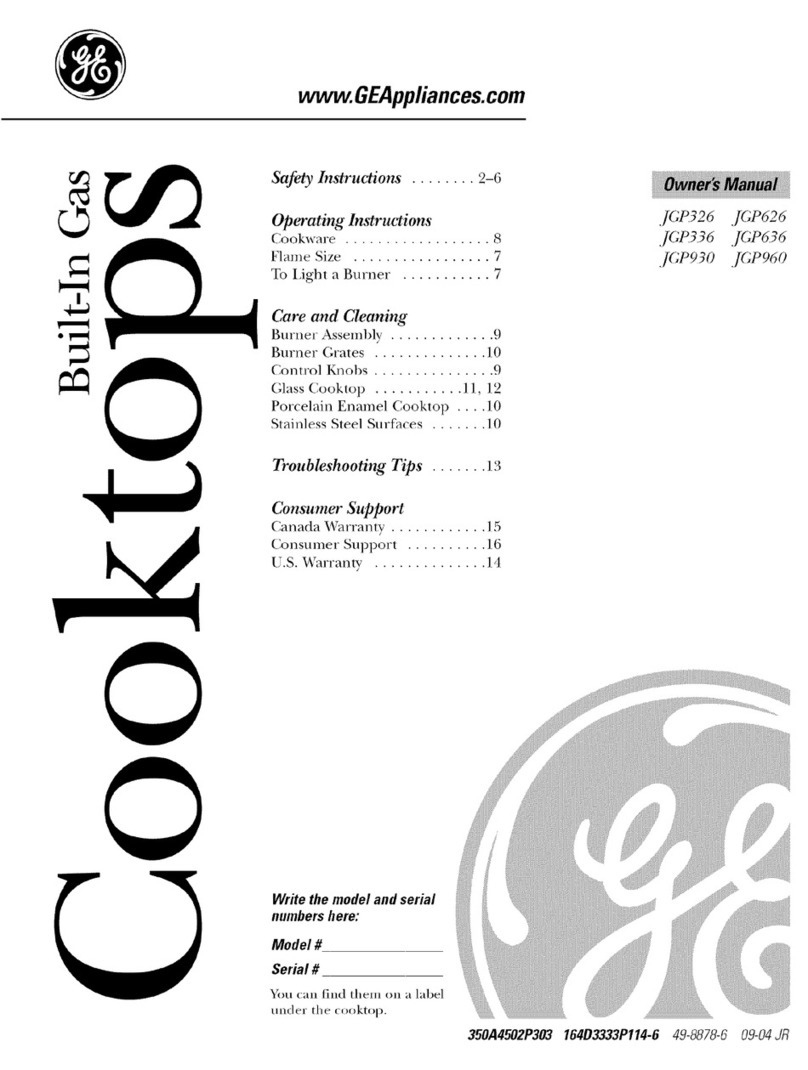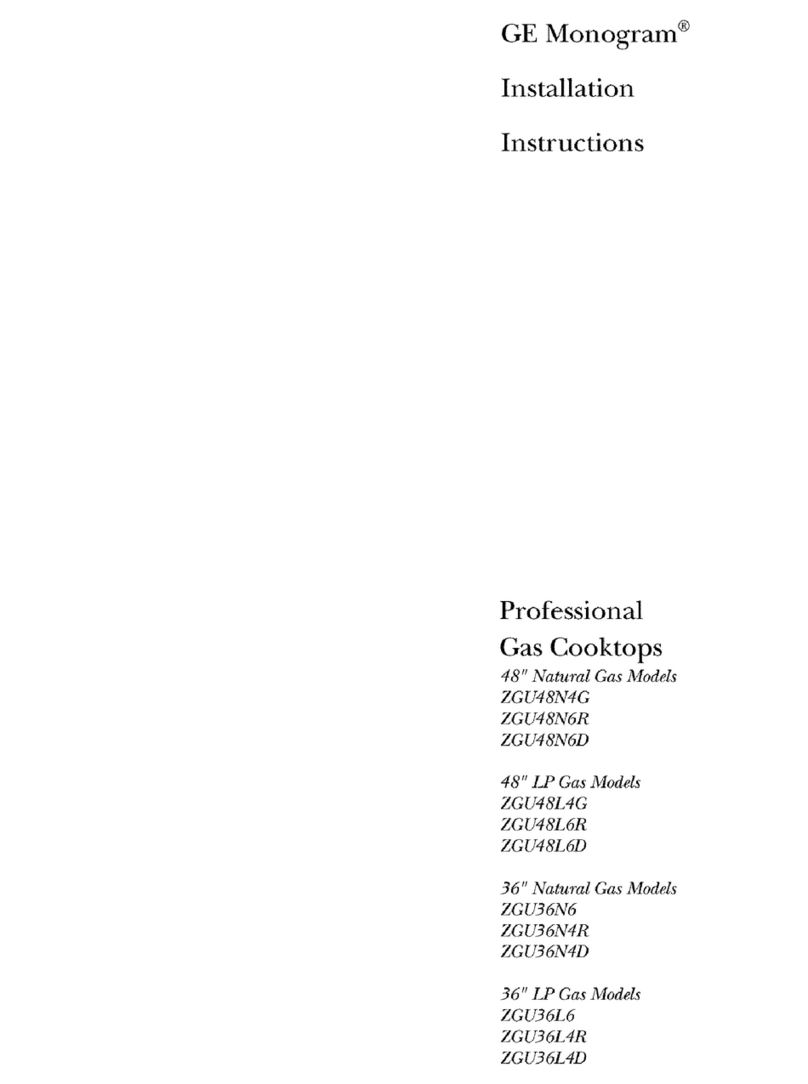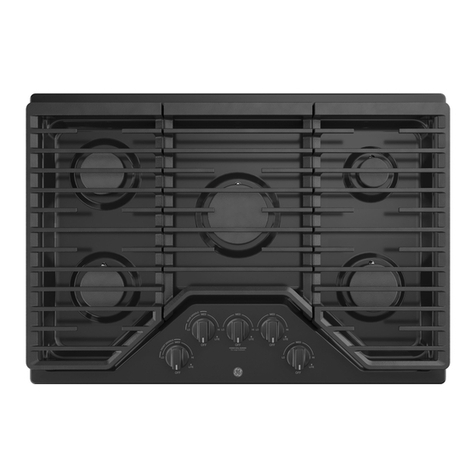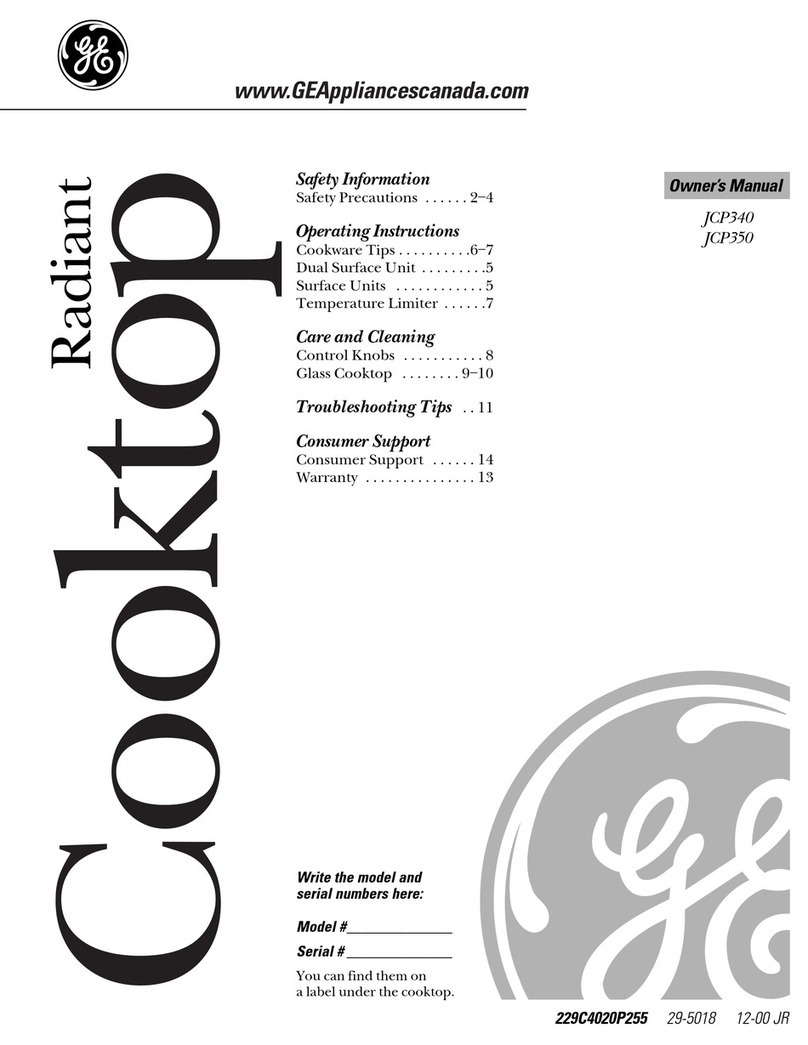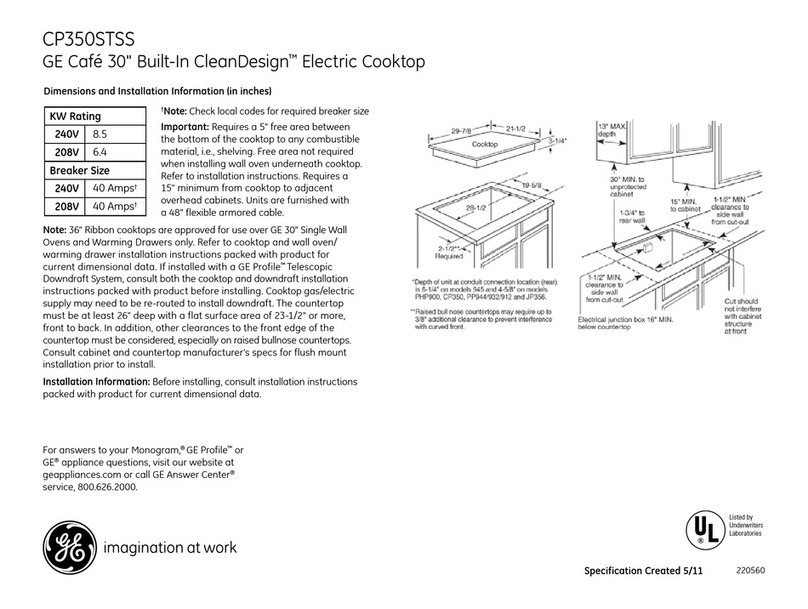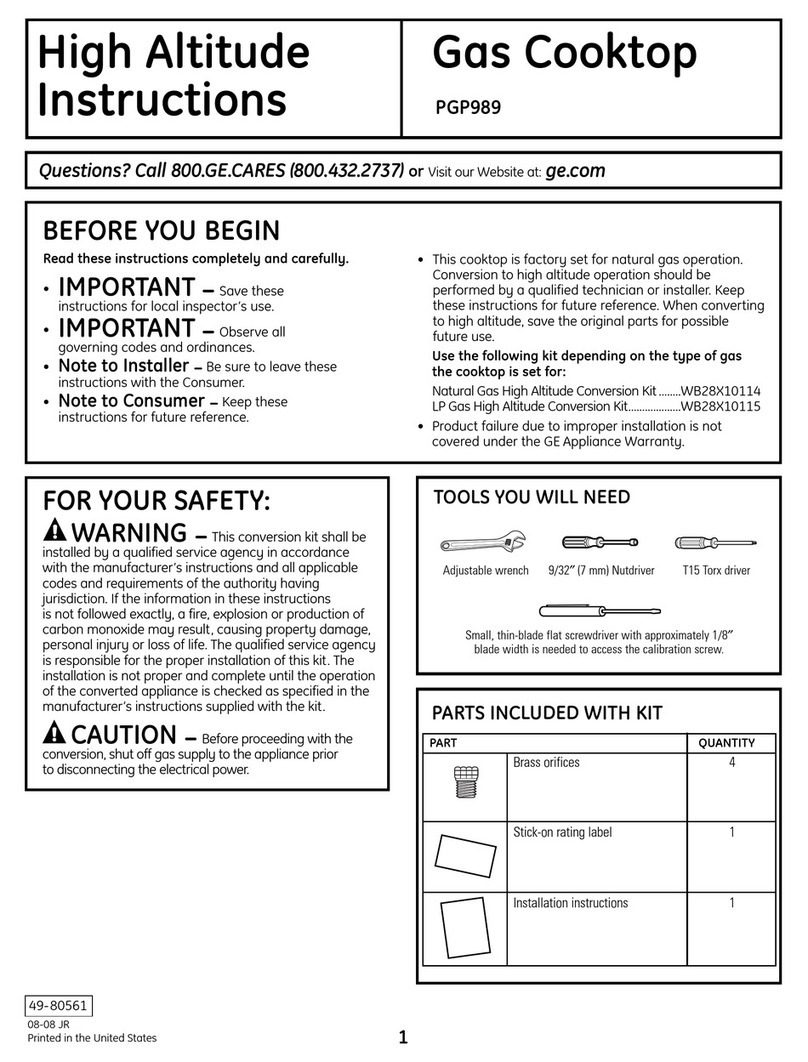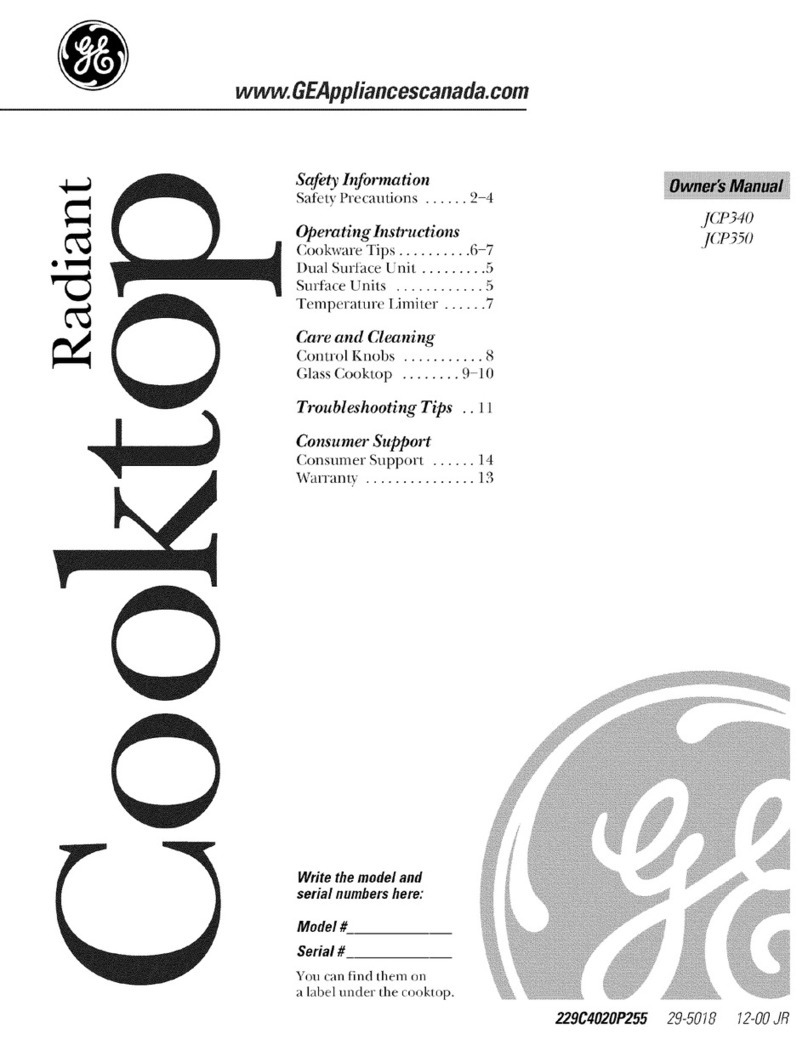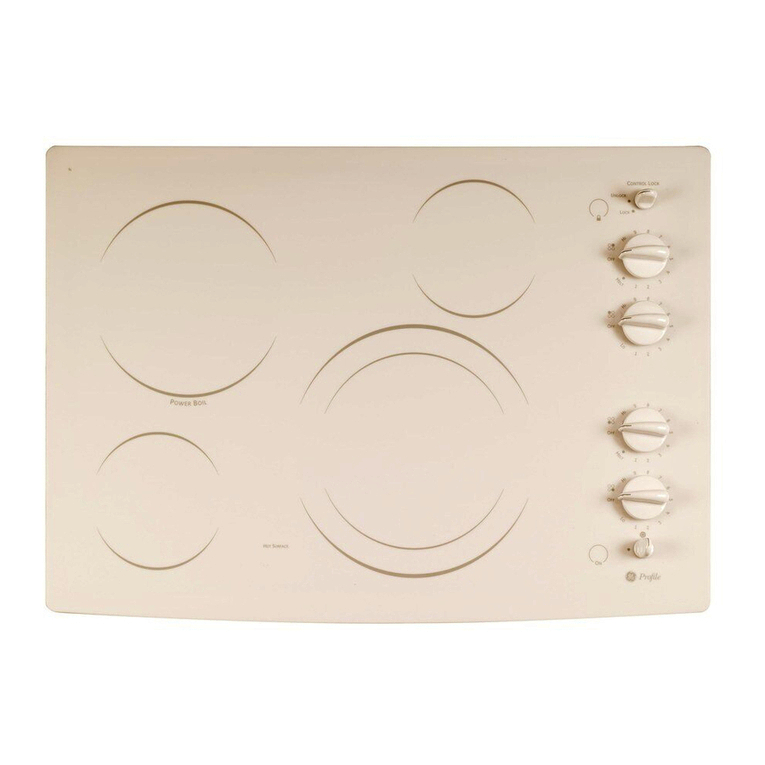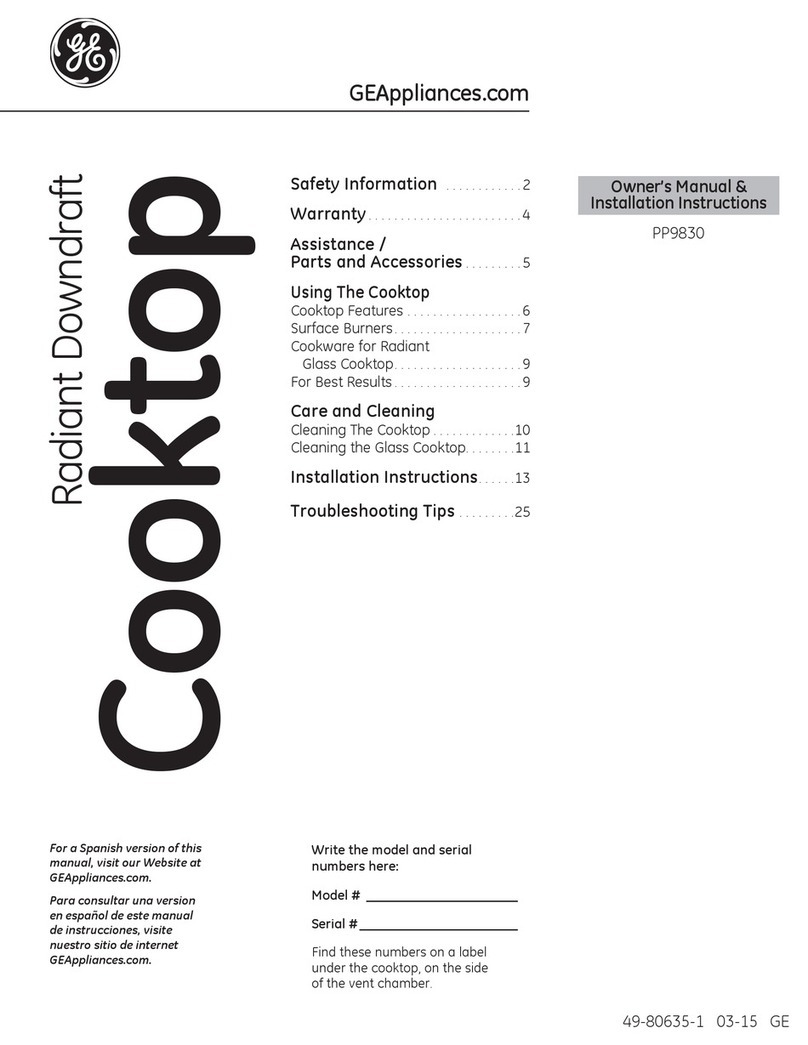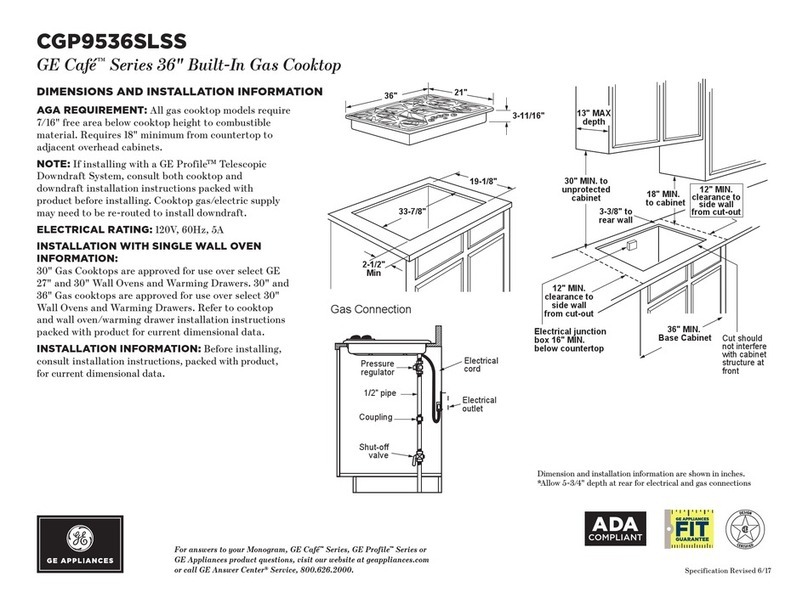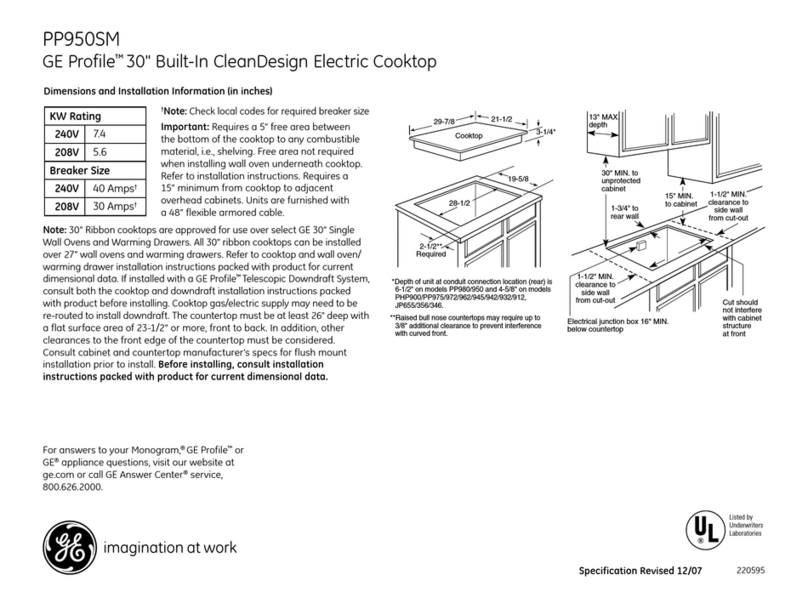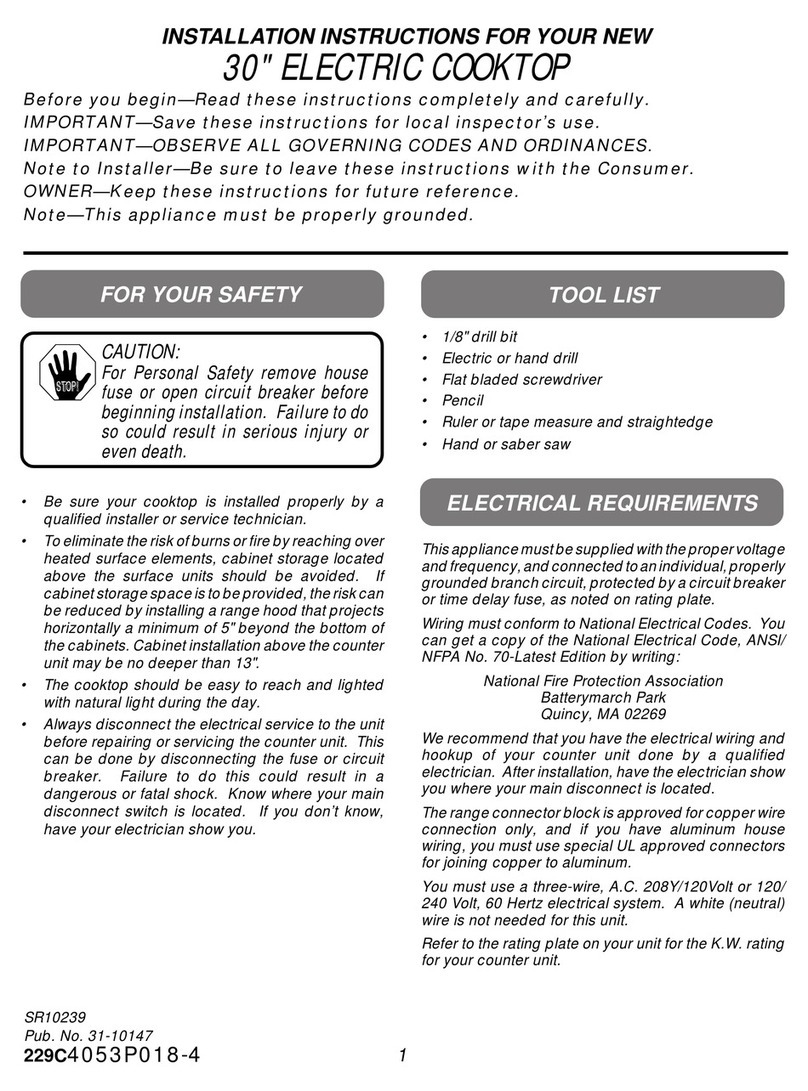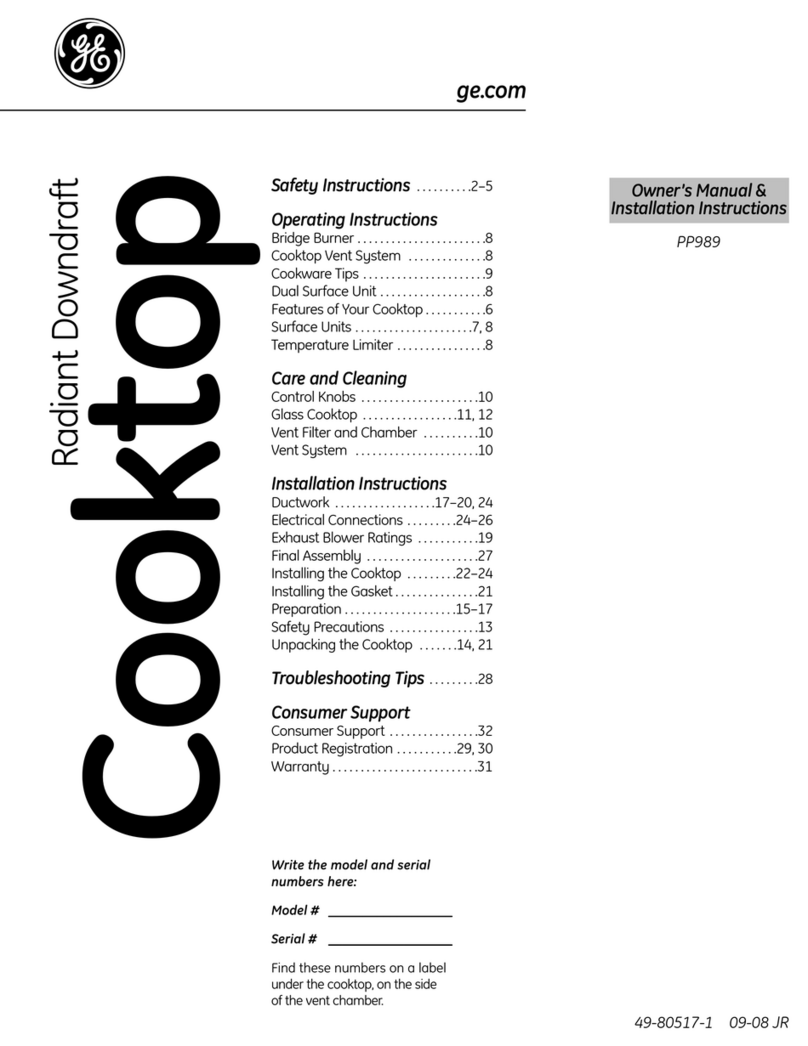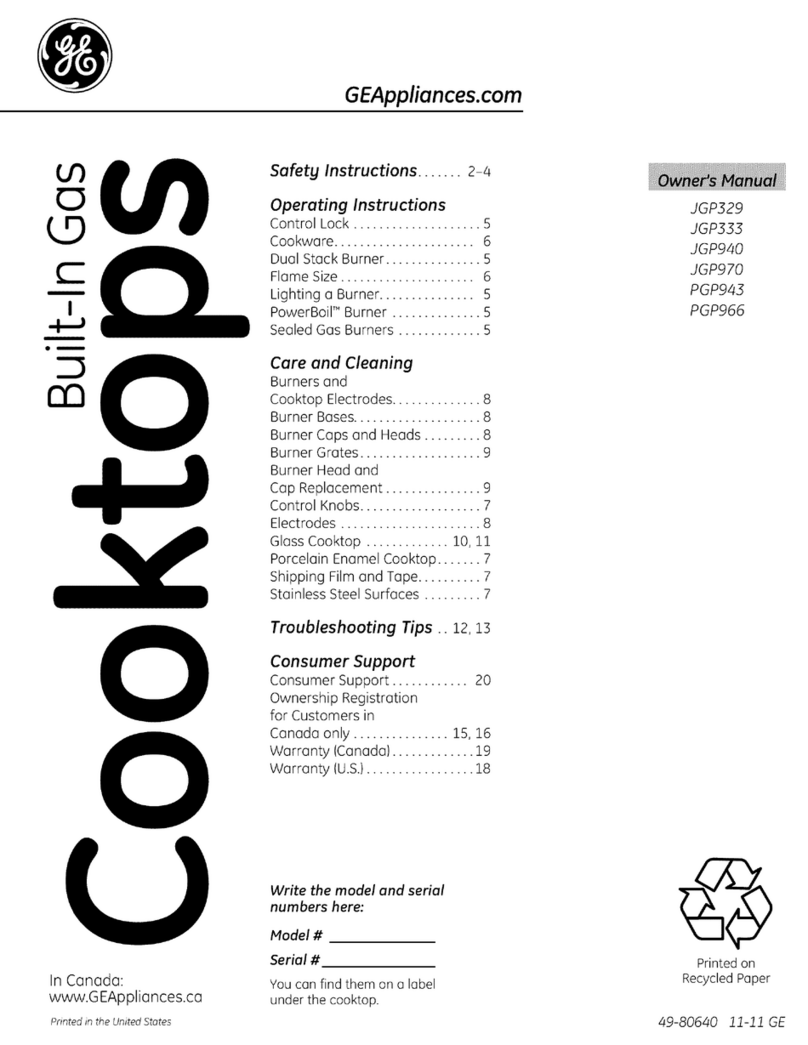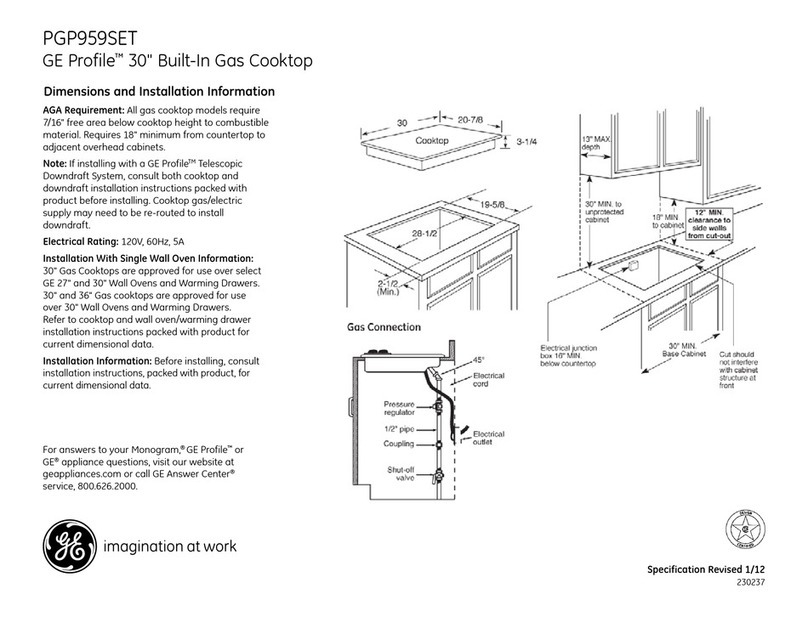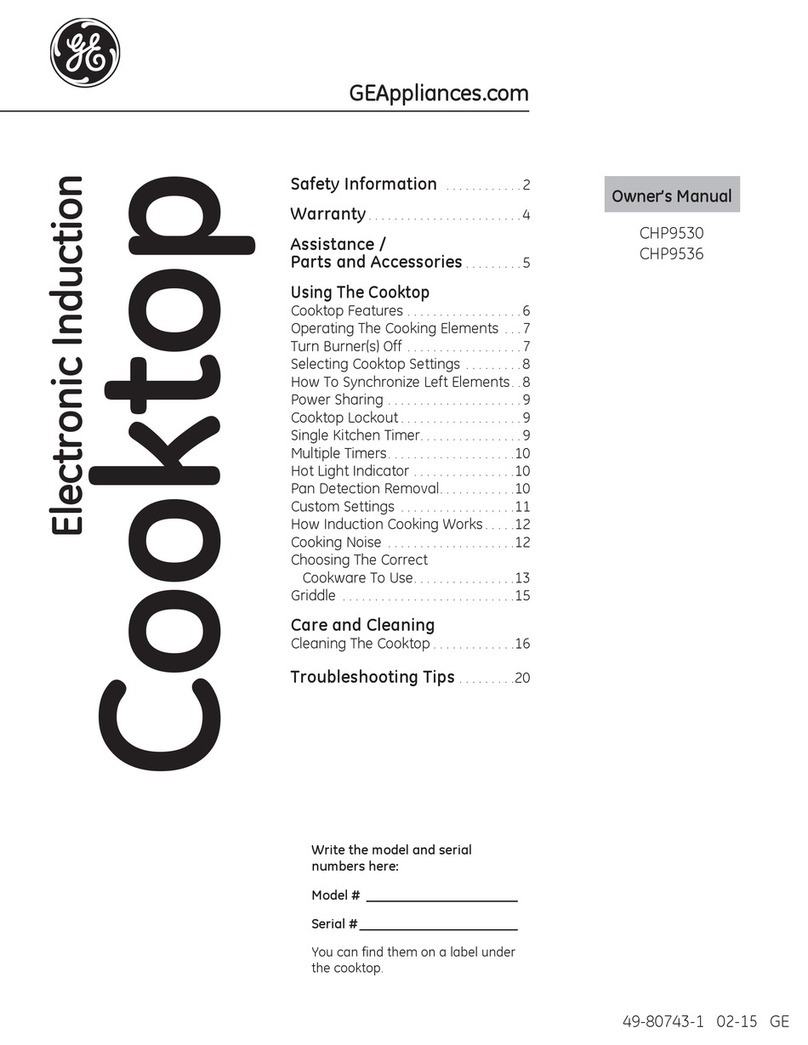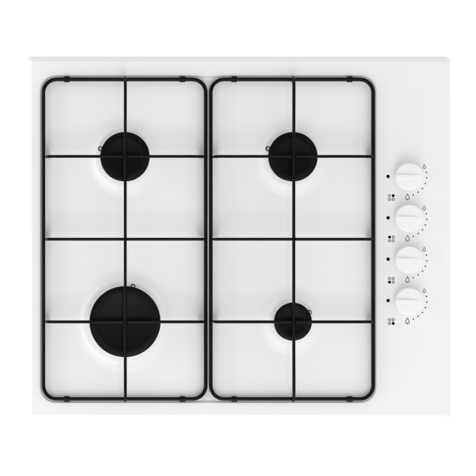r-
(cnnu@
IMPORTANT SAFETY INSTRUCTIONS
●
Never leave the surface units unattended at
high heat settings.
Boilovers
cause smoking and
greasy spillovers that may catch on fire.
●
Use proper pan size— Select cookware having
flat
bottoms large enough to cover the surface
unit’s heating area. The use of undersized
cookware will expose a portion of the surface unit
to direct contact and may result in ignition of
clothing. Proper relationship of cookware to
surface unit will also improve efficiency. See the
Cookware Tips section of the guide.
*
Never try to move a pan of hot fat,
especially
a deep fat fryer. Wait until the fat is cool.
●
Only” certain types of glass, glass/ceramic,
earthenware or other glazed containers are
suitable for cooktop surface; others may break
because of the sudden change in temperature.
●
To minimize the possibility of burns,
ignition of
flammable materials and spillage, the handle of a
container should be turned toward the center of
the cooktop without extending over nearby
surface units.
●
Always keep combustible wall coverings,
curtains or drapes
a safe distance away from
your cooktop.
●
Always keep dish towels, dish cloths, pot
holders and other linens
a safe distance away
from your cooktop.
●
Do not leave paper products, cooking utensils
or food on the cooktop when not in use.
●
Avoid scratching the glass cooktop.
The cooktop can be scratched with items
such as sharp instruments, rings or other
jewelry and rivets on clothing.
●
Never use the glass cooktop surface as a
cutting board.
●
Do not place or store items on top of the glass
cooktop surface when it is not in use.
●
Be careful when placing spoons or other stirring
utensils
on glass cooktop surface when it is in use.
They may become hot and could cause bums.
~
Avoid heating an empty pan.
Doing so may
damage the cooktop and the pan.
●
Do not allow water, other liquids or grease
to remain on the cooktop or control panel.
●
Always heat fat slowly, and watch as it heats.
●
Clean only parts listed in this guide.
—
●
Do
not stand on the glass cooktop.
●
Keep cooktop clean and free of accumulation
of grease or spillovers which may ignite.
●
To minimize the possibility of burns, always be
certain
that the controls for all surface units are at
the off position and the entire glass surface is cool
before attempting to clean the cooktop.
● Always keep wooden and plastic utensils
and canned food
a safe distance away from
your cooktop. They may become hot and could
cause burns.
●
N-ever heat unopened food containers.
Pressure buildup may make container burst
and cause injury.
●
Teach children not to play with controls or any
other part of the cooktop.
Q
Always turn the surface units off before
removing the cookware.
● Keep an eye on foods being fried at high or
medium high heats.
.
When
flaming foods are under the hood, turn —
the fan off. The fan, if operating, may spread
the flame.
●
Foods for frying should be as dry as possible.
Frost on frozen foods or moisture on fresh foods
can cause hot fat to bubble up and over the sides
of the pan.
@
Use little fat for effective shallow or deep-fat
frying.
Filling the pan too full of fat can cause
spillovers when food is added.
● If a combination of oils or fats will be used
in frying,
stir together before heating, or as fats
melt slowly.
●
Use a deep fat thermometer whenever possible
to
prevent overheating fat beyond the smoking point.
● Never leave jars or cans of fat drippings on or
near your cooktop.
●
To avoid possible damage to the cooking
surface,
do not apply Cook Top Cleaning Creme
to the glass surface when it is hot.
●
After cleaning,
use a dry cloth or paper towel to
remove all Cook Top Cleaning Creme residue.
●
Read and follow all instructions and warnings
on Cook Top Cleaning Creme labels.
—
SAVE THESE
INSTRUCTIONS
4


